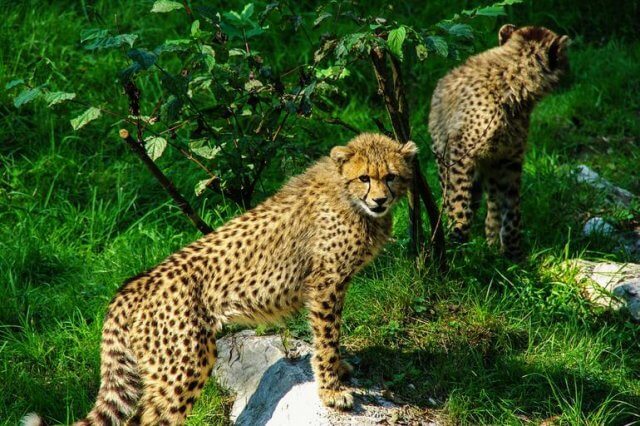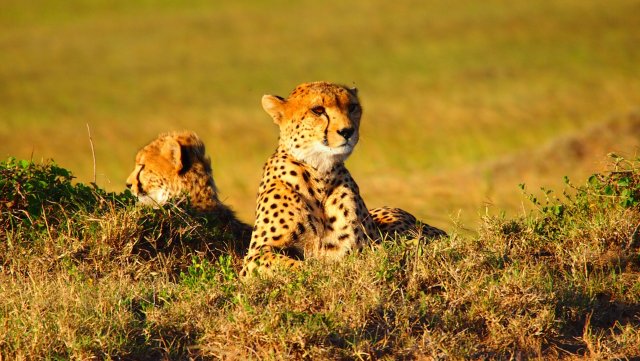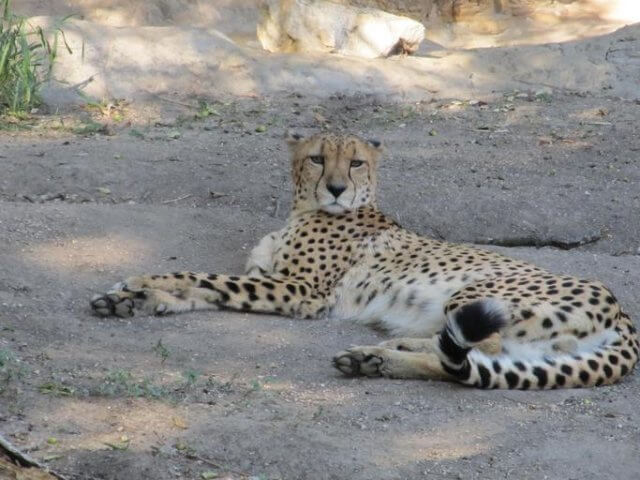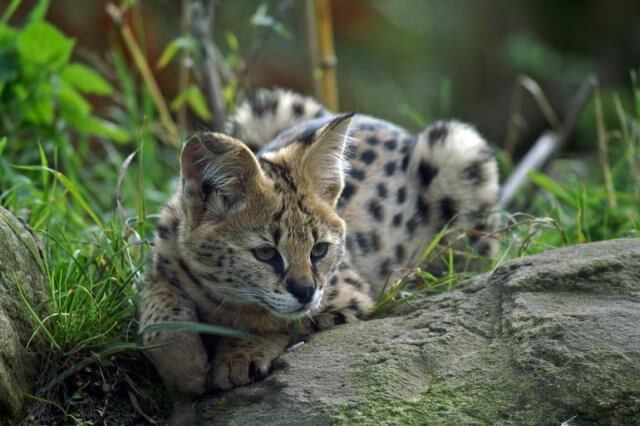7 Amazing Behaviors of Cheetahs Traveling in Groups
Unveiling the Astonishing Behaviors of Cheetahs: A Fascinating Insight
Cheetahs are known for their incredible speed and solitary nature. However, contrary to popular belief, these magnificent creatures also exhibit fascinating behaviors when they travel in groups. In this article, we will explore seven amazing behaviors of cheetahs when they are in the company of their fellow felines.
1. Cooperative Hunting
While cheetahs are primarily solitary hunters, they occasionally form small groups to increase their chances of success during hunts. These groups typically consist of siblings or mothers with their cubs. By working together, cheetahs can surround their prey and execute well-coordinated attacks, making it difficult for their target to escape.
For example, a study conducted in the Serengeti National Park in Tanzania found that cheetahs hunting in groups had a significantly higher success rate compared to solitary hunters. This cooperative behavior allows them to take down larger prey, such as wildebeests or zebras, which would be challenging for a single cheetah to tackle alone.
2. Social Bonding
When cheetahs travel in groups, they engage in various social behaviors that help strengthen their bonds with one another. These behaviors include grooming, rubbing against each other, and vocalizations. Through these interactions, cheetahs establish a sense of trust and cooperation within their group.
A case study conducted in the Maasai Mara National Reserve in Kenya observed a group of cheetah siblings engaging in mutual grooming. This behavior not only helps maintain their fur and remove parasites but also serves as a form of social bonding. By grooming each other, cheetahs reinforce their familial ties and build a strong foundation for future cooperation.
3. Territory Defense
While cheetahs are generally non-territorial, when they travel in groups, they become more assertive in defending their shared space. These groups mark their territory by scent marking, scratching trees, and vocalizing to deter potential intruders.
A study conducted in the Kgalagadi Transfrontier Park, spanning South Africa and Botswana, found that cheetah groups were more successful in defending their territories compared to solitary cheetahs. The presence of multiple individuals increases the group’s vigilance and ability to repel intruders, ensuring the safety and resources within their territory.
4. Cooperative Parenting
Female cheetahs that travel in groups often engage in cooperative parenting, where they collectively care for their cubs. This behavior allows them to share the responsibilities of protecting, feeding, and teaching their young.
Research conducted in the Okavango Delta in Botswana observed a group of female cheetahs raising their cubs together. The cubs were seen playing, learning hunting techniques, and receiving guidance from multiple adult cheetahs. This cooperative parenting not only enhances the survival chances of the cubs but also allows the mothers to take turns hunting, ensuring a steady food supply for the entire group.
5. Information Sharing
When cheetahs travel in groups, they engage in information sharing, which helps them navigate their environment more effectively. This includes sharing knowledge about food sources, waterholes, and potential threats.
A study conducted in the Kalahari Desert in Namibia found that cheetah groups communicated through vocalizations and body language to convey information about nearby prey or potential dangers. By sharing this information, cheetahs can make informed decisions and optimize their hunting strategies, increasing their chances of survival.
6. Mutual Protection
Traveling in groups provides cheetahs with an added layer of protection against predators. By staying together, they can deter potential threats and defend each other when faced with danger.
Observations in the Masai Mara National Reserve documented instances where cheetah groups successfully defended themselves against larger predators, such as lions or hyenas. The combined strength and coordination of the group allowed them to fend off these threats and protect their members.
7. Long-Term Associations
Contrary to popular belief, cheetahs can form long-term associations with their group members. These associations can last for months or even years, providing companionship and support throughout their lives.
A study conducted in the Kruger National Park in South Africa found that some cheetah groups remained together for several years, even after the cubs had grown and become independent. These long-term associations contribute to the overall well-being and social stability of the cheetah population.
Summary
Behaviors of Cheetahs: Cheetahs, despite their reputation as solitary animals, exhibit remarkable behaviors when they travel in groups. From cooperative hunting and social bonding to territory defense and mutual protection, these behaviors highlight the advantages of group living for cheetahs. Additionally, cooperative parenting and information sharing further enhance their chances of survival in the wild. By understanding and appreciating these amazing behaviors, we can gain valuable insights into the complex social dynamics of cheetahs and the importance of group cohesion in their lives.
Read More About Cheetah’s From Wikipedia







